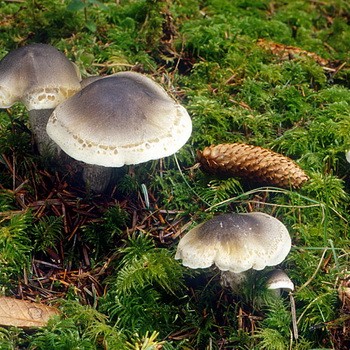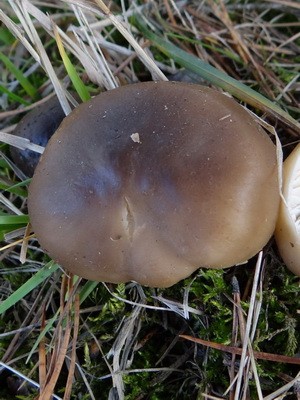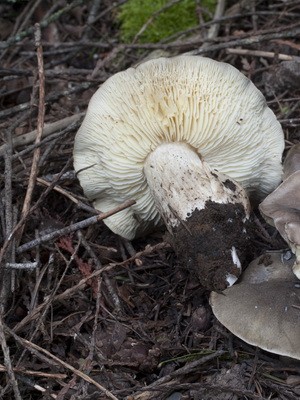 Soap row due to some features belongs to the category of inedible fruiting bodies. Experienced mushroom pickers can always easily distinguish it from edible representatives, which cannot be said about beginners. Soap row is not eaten because of the unpleasant smell of pulp, reminiscent of laundry soap. But some brave chefs manage to salt these mushrooms with the addition of horseradish root and garlic, after boiling them for 40 minutes in salted water.
Soap row due to some features belongs to the category of inedible fruiting bodies. Experienced mushroom pickers can always easily distinguish it from edible representatives, which cannot be said about beginners. Soap row is not eaten because of the unpleasant smell of pulp, reminiscent of laundry soap. But some brave chefs manage to salt these mushrooms with the addition of horseradish root and garlic, after boiling them for 40 minutes in salted water.
To understand in more detail, we offer a detailed description of the soap row mushroom with the presented photos.
What does the soap row mushroom look like and where does it grow
Latin name: Tricholoma saponaceum.
[ »»]
Family: Ordinary.
Synonyms: Agaricus saponaceus, Tricholoma moserianum.
Hat: at a young age has a hemispherical, convex shape. Later it becomes prostrate, polymorphic, from 5 to 18 cm in height, sometimes up to 20 cm. In wet weather it becomes sticky and slippery, in dry weather it is scaly or wrinkled, the edges of the cap are fibrous and thin. The color of the cap is gray with an olive tint, less often there is a bluish tint.
Leg: has a cream color with a gray-green tint, at the base with a pink tint, cylindrical in shape, sometimes spindle-shaped, with grayish scales. Height from 3 to 10 cm, sometimes it can grow up to 12 cm, in diameter from 1,5 to 3,5 cm. A photo of a soap row and a description of its legs will help you correctly identify this species in the forest:

Pulp: light, loose, on the cut becomes pink. The taste is bitter, with an unpleasant smell of soap, aggravated by heat treatment.
Records: sparse, sinuous, gray-green in color, which changes to pale green with age. When pressed, the plates become red or brown.
Edibility: some experts consider the soap row a toxic fungus, others classify it as an inedible species. Apparently, it is not poisonous, however, due to bitterness and an unpleasant odor, it is not going to. Interestingly, some sources say that after a long heat treatment, the row can be eaten, but these are only isolated cases.
Similarities and differences: the soap row is similar to the edible gray row, which does not have bitterness and the smell of soap.


Pay attention to the photo of the soap row, which is also very similar to the golden row, but it has a lighter yellowish color and pink plates. The golden row differs from the soapy one by the smell of fresh flour or cucumber.
The soap row is similar to the edible earth row, the hat of which is darker in color with black scales and a floury smell.
[ »wp-content/plugins/include-me/goog-left.php»]
Of the inedible species, it looks like a pointed row, which has a bell-shaped hat of gray color, with gray or whitish plates, with a bitter taste.
Also, the soap row is similar to the poisonous tiger row, which is distinguished by a black-brown spotted hat that has a green tint and a pungent smell.
Distribution: soapy mushroom can be found in coniferous and mixed forests, as well as in pine forests on different types of soil. It grows singly or in small groups, forming rows. The harvest season is August – October. Sometimes, under favorable weather conditions, it grows until the first frost. Row mushrooms are common throughout the temperate zone of Our Country. They grow in Karelia, in the Leningrad region, in Altai and in the Tver region, meeting almost until November. Often found on the territory of Ukraine, Western Europe, as well as North America and Tunisia.
Pay attention to the video of a soap row growing naturally in a mixed forest:









